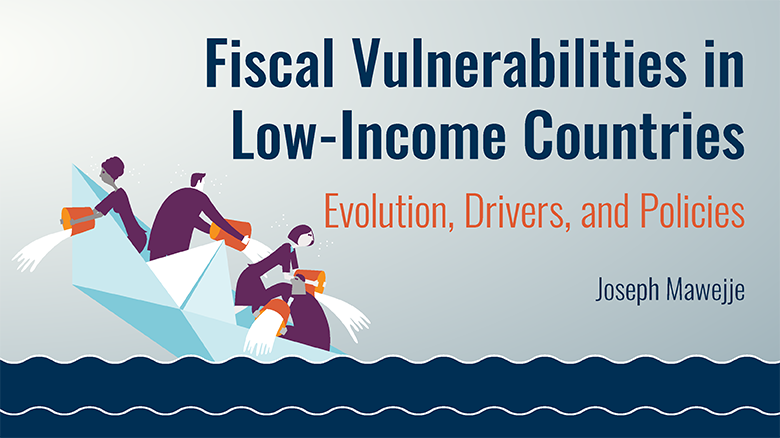Full report | Charts and data | Press release
The world’s 26 poorest economies—home to about 40 percent of all people who live on less than $2.15 a day—are deeper in debt than at any time since 2006 and increasingly vulnerable to natural disasters and other shocks. Yet international aid as a share of their GDP has dwindled to a two-decade low, starving many of much-needed affordable financing.
This study constitutes the first systematic assessment of the causes of chronic fiscal weakness in the very poorest economies—those with annual per capita incomes of less than $1,145 a year. These economies are poorer today on average than they were on the eve of COVID-19, even though the rest of the world has largely recovered. Government debt, on average, now stands at 72 percent of GDP, an 18-year high. Nearly half of these low-income countries (LICs)—twice the number in 2015—are either in debt distress or at high risk of it. Not one of them is at low risk.
LICs’ ability to attract low-cost financing, meanwhile, has largely dried up: net financial flows—including foreign direct investment and official aid—fell to a 14-year low in 2022, the latest year for which data are available. That has left the World Bank’s International Development Association (IDA) as their single-largest source of low-cost financing from abroad. IDA provides grants and near-zero-interest-rate loans to 77 of the world’s most vulnerable economies, and it is crucial to the 26 poorest among them.
These countries have significant potential to boost growth at home and contribute to broader prosperity and peace as well: their natural resources are ample, and their working-age populations are rapidly growing. If this potential can be harnessed effectively, they can contribute to sustainable growth and healthier fiscal positions.
Well-designed national policy interventions can improve fiscal positions in LICs. National policy makers in LICs should aim to strengthen domestic revenue mobilization, improve spending efficiency, upgrade debt management practices, and foster stronger economic growth. Long-term prospects can be enhanced by policies that encourage broad reforms to ease structural constraints on investment growth, reduce informality, address market failures, and strengthen institutions. The support of the global community is also critical to helping LICs take advantage of their natural resources and demographic dividends, stabilizing their fiscal positions, and improving fiscal policy management.
